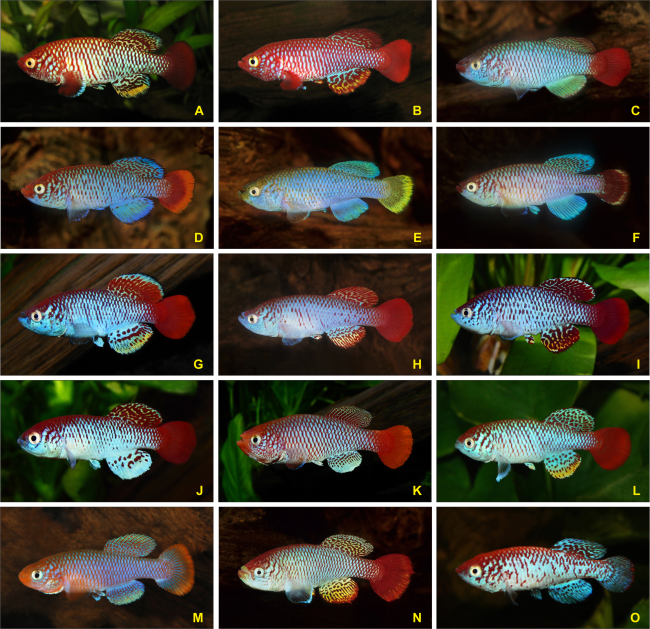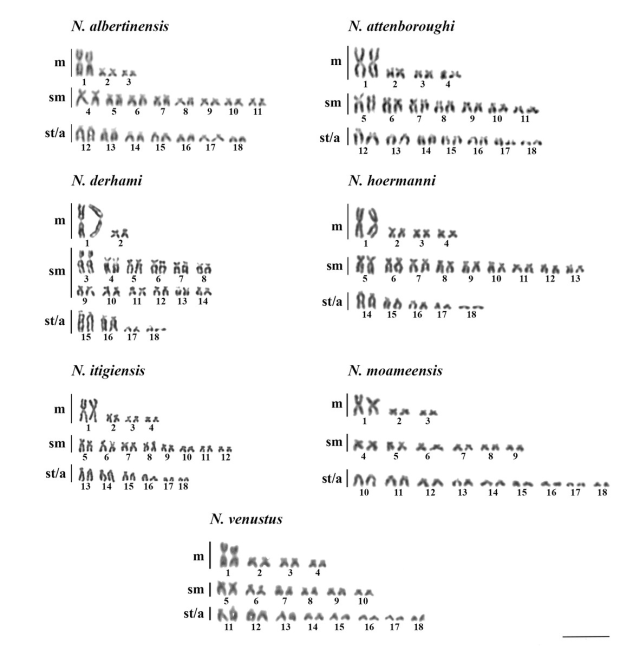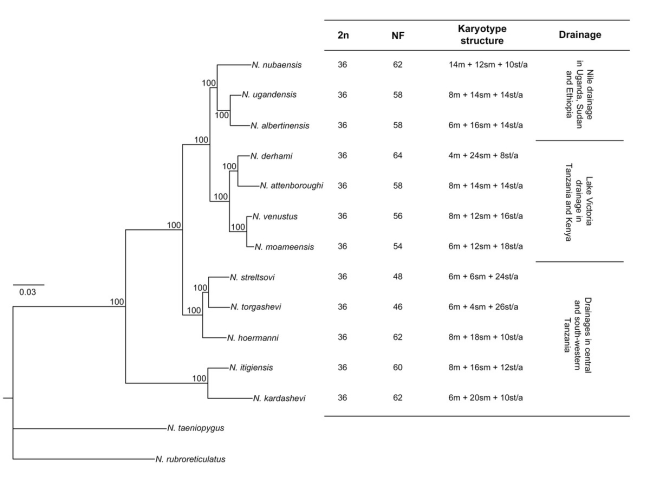
Fig.1 Mature males of representatives of the species group Nothobranchius ugandensis. The coloration of males is species-specific and is an important diagnostic feature for Notobranchius.
Researchers from IEE RAS, Ph.D. E.Yu. Krysanov and Ph.D. S.A. Simanovsky, together with colleagues from France, Canada, and the Czech Republic, studied the differentiation of karyotypes in the group of Nothobranchius ugandensis, which includes 12 valid species. In addition to cytogenetic data for each of the 12 species, a complete set of phylogenetic and biogeographic data was also analyzed.

Fig.2 Karyotypes of seven notobranchius species that were first studied cytogenetically in this work

Fig.3 Phylogenetic tree based on the analysis of two mitochondrial genes, with cytogenetic and biogeographic data included
The researchers showed that the N. ugandensis species group is characterized by a conservative diploid number of chromosomes 2n = 36, but a varying number of chromosome arms NF = 46–64, which suggested a significant role of pericentric inversions and/or other types of centromere reposition in the evolution of the genomes of this species in this group. It is noteworthy that while the karyotypes of many other species of the genus Nothobranchius have differentiated by chromosome fusions and splits (2n within the genus varies from 16 to 50), the N. ugandensis species group retains a stable 2n, and karyotype differentiation seems to have been limited to intrachromosomal restructuring.
One of the most interesting conclusions of the work was that the cytogenetic characteristics did not show any correlation either with phylogenetic relationships or with the features of the distribution of the ranges of the studied species. The authors suggest that the main factor in the fixation of chromosomal rearrangements in this case is genetic drift; however, further studies are needed to assess the impact of putative multiple inversions on genome evolution and their possible role in local adaptations.
The work was published in Comparative Cytogenetics (SJR Q2, IF = 1.079):
Krysanov E.Yu., Nagy B., Watters B.R., Sember A., Simanovsky S.A. (2023) Karyotype differentiation in the Nothobranchius ugandensis species group (Teleostei, Cyprinodontiformes), seasonal fishes from the east African inland plateau, in the context of phylogeny and biogeography. Comparative Cytogenetics 7(1): 13–29. https://doi.org/10.3897/compcytogen.v7.i1.97165
